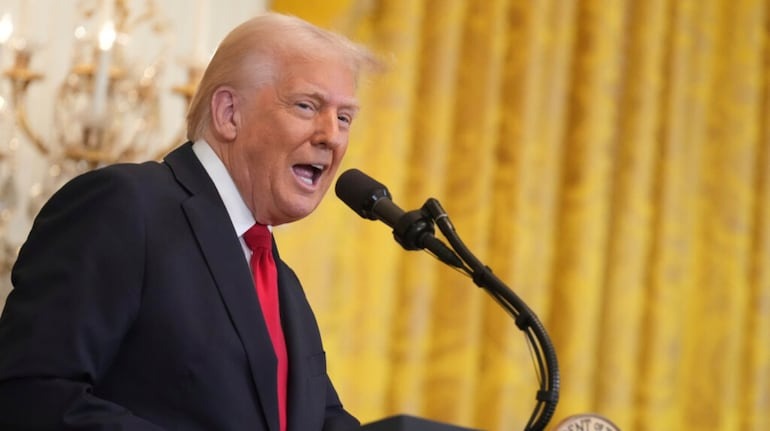
April Fools' Day is known for lighthearted fun and clever pranks. One of the most memorable hoaxes was NPR's 1992 fake report of Richard Nixon’s return to politics, with the slogan: “I never did anything wrong and I won’t do it again.” In Scotland, the mischief stretches across two days, with ‘Taily Day’ reserved for pranks involving "backsides"—think taped-on paper tails or “kick me” signs.
But this year, the world braced for a different kind of surprise on April 2—policy moves from the Trump administration that could deeply impact global trade.
Trade Tensions: Tariffs on Autos, Oil, and More
The US president announced 25% tariffs on auto parts and vehicles, triggering a wave of market analysis. We reviewed which Indian companies might take a hit and whether investors should consider realignment. In parallel, the administration imposed secondary tariffs on countries importing crude oil from Venezuela, pushing global oil prices higher.
Though aimed at realigning foreign policy support, these moves left many confused—especially considering Trump’s desire to reduce inflation via lower energy prices. An FT piece titled "If you are confused about Trump’s energy plan, you are not alone" captured the uncertainty perfectly.
“Trumponomics” or Just Trouble?
Analysts have struggled to define Trump’s economic ideology. Former Morgan Stanley executive Stephen Roach compared it to China’s Cultural Revolution, citing unpredictability and disruption. Trump’s slogans like “Build the Wall” echo revolutionary rhetoric from decades ago, adding to the drama.
Meanwhile, Emkay Research highlighted Indian sectors most at risk from US retaliation, flagging stocks to monitor closely on April 2. But the bigger question is whether this is just the start of a long negotiation phase or a prelude to more trade friction.
Supply Chains, Tariffs, and Domestic Realities
Even if tariffs take effect, business reactions will take weeks to materialize due to supply chain complexities. While Trump claims these moves will push production to the US, labor costs don’t support that view—wages average $1.5/hour in India vs. $15/hour in the US.
If moving manufacturing is the goal, raising tariffs on steel and aluminum only adds confusion. Rising copper prices also threaten production costs. As the FT’s Martin Wolf wrote: “Trumponomics is putting lipstick on a policy pig.”
How Are Markets Reacting Globally?
Despite the noise, Canada and Mexico’s stock indices have performed surprisingly well this year—up 2% and 11% respectively. The US market, however, dipped by 3.3% year-to-date. India, meanwhile, has seen strong foreign investor interest, becoming the top choice across Asian markets.
Jefferies recently noted a reversal of FPI outflows, with many investors starting to reduce their underweight stance on Indian equities.
Why India May Be Better Insulated
India’s economy is more domestically driven. The estimated GDP impact from tariffs ranges between 5 to 60 basis points—moderate, depending on how widespread the measures are.
We also examined domestic developments:
IT sector’s growth prospects amid changing US demand
Why a leading affordable housing stock deserves premium valuations
Financial stocks’ potential rebound
L&T’s aggressive global energy strategy
At the policy level, India faces its own internal challenges—state-level debt concerns, mismatched growth targets, and evolving sectoral dynamics in fintech, energy, and housing.
Policy Uncertainty: Are We ‘Waiting for Godot’?
With so many global variables, clarity remains elusive. Is this the most unpredictable phase in economic policy since the 2008 crisis? Possibly.
To quote Samuel Beckett’s Waiting for Godot:
“In the immense confusion one thing alone is clear. We are waiting for Godot to come.”
And while we wait, perhaps Leonard Cohen said it best:
"Everybody knows the fight was fixed,
The poor stay poor, the rich get rich.
That's how it goes,
Everybody knows."
Read More: UIDAI Updates Verification Rules to Replace Physical Aadhaar Photocopies with Offline Method

 Share
Share



